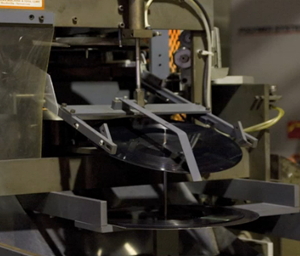Vinyl Revival: Brooklyn Phono
There’s a record-making resurgence in Brooklyn … and the world.
According to Nielsen Soundscan, sales of vinyl records rose by a shocking 39% in 2011 to reach totals of nearly 4 million.
And those are just the conservative estimates – Soundscan’s rankings only include barcode sales at retail outlets. The RIAA says that even after accounting for returns, vinyl shipments had already topped 4 million by 2010, for a revenue increase of 44% from the year before. This represents a mere fraction of the total music market, but an important one.
Of course, Thomas Bernich didn’t know that any of this was coming 10 years ago when he opened Brooklyn Phono in Sunset Park.
He had set up shop right down the street from an old repairman who had spent the past several decades restoring vintage jukeboxes and arcade games, and was then on the verge of retirement.
They both rattled around their too-large warehouses, Bernich ramping up business with his one functional SMT record press, while his neighbor wound things down. As a parting gift, the older man would give Bernich a classic jukebox for his shop and a tabletop Ms. Pac-Man for his home.
“I didn’t start this in anticipation of the resurgence,” Bernich told Goldmine Magazine in 2010. “I’m happy to be caught in it. It helps us grow. But I just did this because I wanted to do something where I could come to work every day and put my full energy into it.”
When he began, Bernich says he was working 6 days a week, up to 20 hours each day. His schedule eventually became more sane as he mastered the process and brought his machines up to speed.
The day I visited Brooklyn Phono, he had a look of alert and patient focus, and gave a brief smile and a polite little nod while tending to his 5 fully-restored record presses.
Men and Machines at Work
“They need to be watched constantly,” production manager Paul Sweedlund told me. “Anything can happen in the process.”
If a bit of oil or dust comes between the plate and the stamper, it could ruin an entire batch of records. If the presses fail to heat the vinyl to a temperature near 300 degrees Fahrenheit or to provide a solid 100 tons of pressure, records would fail to be made, orders would be delayed.
Bernich slipped from station to station as the machines spit out oversized pucks of black marshmallow and stamped them into a sleek wafers of recorded music. It looked like good honest work – especially to an observer who spends so much of his time with digitized words and sound.

A puck-like "biscuit" is heated to nearly 300 degrees and flattened to a pancake under 100 tons of pressure. Staffer Andrey Radovski holds the finished product.
This is a process that’s almost 110 years old, and Bernich has called what he does “adding value to raw materials.” Those raw materials are virgin pellets of vinyl in a variety of colors, sometimes mixed in with recycled materials called “regrinds.”
The NYC record label Green Owl even commissioned Brooklyn Phono to make completely recycled discs for their releases in 2010. Sweedlund told us he and Bernich were nervous at the prospect at first, but after perfecting the recycled blends, they found they could get results that were just as good, and potentially better than with some of today’s virgin vinyl.
Still Growing
The market for vinyl records is changing as well. The medium had been driven by sales of 12” singles in the recent past, but as DJs continue switching to spine-saving digital systems like Serato, it’s the regular consumers who used to buy CDs that account for the growth. The industry has taken notice, and even Best Buy began stocking records and players in 2009.
Tyler Kane at Paste Magazine has even argued that the true sales of vinyl may outstrip the estimates from both Soundscan and the RIAA. That’s possible, as Sweedlund told us that the majority of their pressing projects are for orders of 200-500 discs, often placed directly by artists who plan to sell their records at shows. The plant has even pressed orders as small as 25 discs for art projects and collectible runs, although Sweedlund admits that the costs per disc at that scale can be prohibitive.
They don’t shy away from big orders either. Brooklyn Phono has pressed 5,000 LPs at a time for bands like Cake, and even created limited-run 7” singles for that group in 3 different colors.
While not everyone agrees that vinyl always sounds better than digital formats, the medium can encourage less intrusive mastering practices. But there’s more to it than that. Best guesses are that vinyl appeals to the desire for some music to come in tangible, collectible forms, and for the lost rituals of a more human age.
Although Bernich has said vinyl is no longer “a commercial medium,” we can probably look forward to its sales continuing to rise, and for Brooklyn Phono to keep on expanding. When I visited, the whole building was humming with activity, and 7 men were working hard to keep up.
Sweedlund says that today their biggest challenge isn’t finding work — It’s growing to meet the demand.
Please note: When you buy products through links on this page, we may earn an affiliate commission.








justcoolrecords
March 9, 2012 at 1:59 am (13 years ago)Fantastic! So glad to hear that the desire for vinyl continues to rise. Keep up the great work, guys!
Lisa
rarevinylandjustcoolrecords.blogspot.com